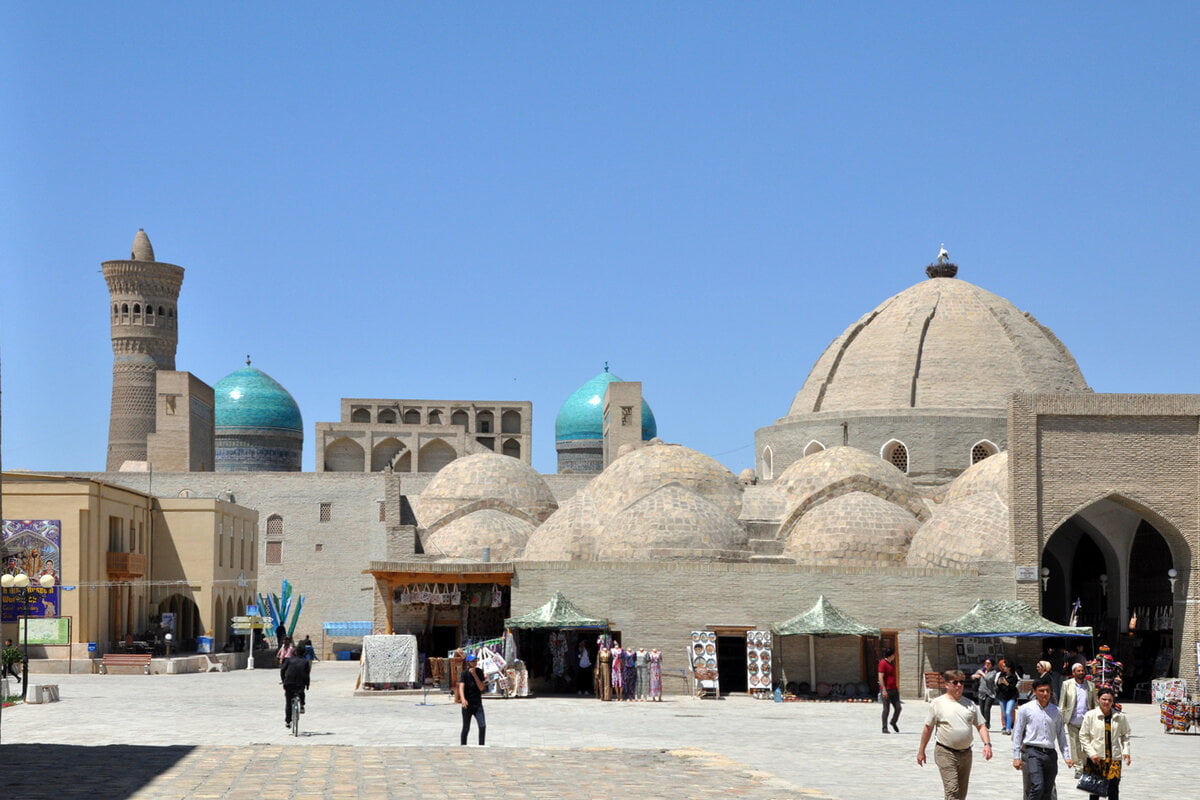Bukhara - Trading Dome Toqi Zargaron
The Trading Dome Toqi Zargaron (in some sources Taqi Zargaron) is the most extensive bazaar among the bazaars of Bukhara. It is located north of the other three famous dome bazaars in the city, near the Poi Kalon complex. This majestic architectural masterpiece was built between 1569 and 1570 under the rule of Abdullah Khan II of the Shaibanid dynasty.

The Trading Dome Toqi Zargaron in Bukhara became the first such bazaar in the city after Bukhara was awarded the honorary title of capital of the great state and became one of the important points on the Great Silk Road. The establishment of Bukhara as one of the most important administrative, commercial and craft cities of Central Asia contributed significantly to the prosperity of the dome bazaars. Their establishment made it possible not only to organise a wide range of trade, but also to relieve the central streets in order to make movement in the city as pleasant as possible. The Trading Dome Toqi Zargaron was built on the site of the Chorsu – the intersection of shopping streets and bazaars. Together with other monuments of Bukhara, the trading dome Toqi Zargaron has been included in the UNESCO list of World Heritage Sites as “Historical Centre of Bukhara”.
“Toqi” is the name of the domes of the covered bazaars, which were built at the intersection of several busiest streets. “Zargar” is translated as “jeweller”, so that the Toqi Zargaron dome was also called “Jeweller’s Trading Dome”.
The structure is executed in the style typical of Persian architecture. The dome is quite strongly stretched and the vertical edges of the structure protrude strongly forward, outwards. Around the central space under the dome there were shops of traders and workshops of local craftsmen. Small, overlapping domes were also built over galleries with benches and workshops, creating a multi-domed roof over the rows of merchants. The united galleries under the vault can be described as medieval corridors.
The diameter of the central dome of Toqi Zargaron is 14 metres.
The material used for the construction of the trading dome was ceramic bricks. Toqi Zargaron is, among other preserved covered bazaars of Bukhara, the most complex in terms of construction and arrangement. The space inside is organised in such a way that it remains cool even on hot summer days. No decorative elements were used in the construction, as the most important thing was a constructive and efficient arrangement. The traders’ shops extended from the dome to the Ulugbeg madrasah.
Within the walls of the building there is literally a jewellery kingdom. Once there were 36 workshops of craftsmen and jewellery stands in niches of galleries and pylons. Traditional oriental jewellery was made directly within the walls of the bazaar complex and then sold here.
Here one could buy earrings, necklaces, rings, luxurious headdresses made of movable parts. Traditional earrings from Bukhara consisted of a circle with a large diameter and pendants attached to it. Precious stones and enamel coating served as jewellery. Several different masters were usually involved in the production in different phases of work. The tools and knowledge of working with jewellery were passed on from father to son. It is assumed that gold, silver and copper coins were also minted here, among others for the Emirate of Bukhara.
To a much lesser extent candles and aromatic soap were sold here, which were even more appreciated than jewellery. Carpet merchants, caravanserais for traders and travellers, warehouses for objects were usually located near the dome.
Today, trade is conducted here as it was several hundred years ago. The Trading Dome Toqi Zargaron is a popular attraction. Tourists come here not only on excursions, but also to buy unique jewellery and other silverware made by local craftsmen. Other goods are also sold here: Souvenirs, clothes, tableware, antiques, carpets, books, paintings, coins, musical instruments. According to the travellers’ evaluations, the prices in the covered bazaar are acceptable. As in any market, it is customary to negotiate with sellers and to obtain discounts.
